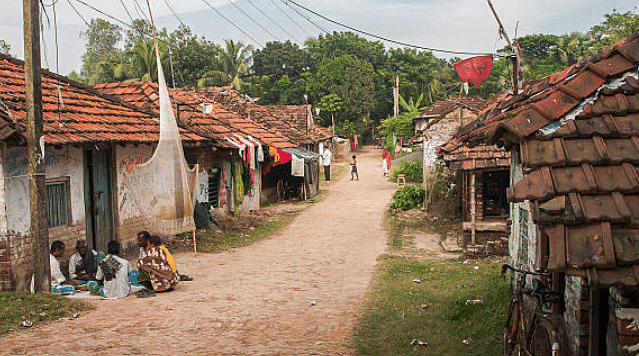Indian Villages - 2 Class 3 Worksheet SST
Q1: Multiple-Choice Questions (MCQs)
 (i) What is the center of most Indian villages where people gather and socialize?
(i) What is the center of most Indian villages where people gather and socialize?
(a) School
(b) Temple
(c) Marketplace
(d) Hospital
Ans: (c)
The marketplace is a central place in Indian villages where people meet, buy, sell, and interact.
(ii) What is the traditional name for the head of an Indian village?
(a) Mayor
(b) President
(c) Sarpanch
(d) Minister
Ans: (c)
The sarpanch is the elected head of a village panchayat, responsible for local governance.
(iii) Which of the following is a common means of transport in Indian villages?
(a) Metro
(b) Car
(c) Bicycle
(d) Airplane
Ans: (c)
Bicycles are commonly used for short-distance transportation in Indian villages.
(iv) Which natural resource is essential for farming in Indian villages?
(a) Sand
(b) Rocks
(c) Fossils
(d) Soil
Ans: (d)
Soil is vital for farming as it provides nutrients to crops and supports agricultural activities.
(v) What type of houses are often found in Indian villages, made from materials like mud, straw, and clay?
(a) Skyscrapers
(b) Bungalows
(c) Cottages
(d) Huts
Ans: (d)
Huts are traditional dwellings commonly found in Indian villages, made from locally available materials.
Q2: Fill in the Blanks
(i) Villages are often surrounded by __________ and open spaces where children play.
Ans: fields
Fields are common areas in villages used for agriculture and other activities.
(ii) In Indian villages, the village panchayat helps solve problems and make decisions for the __________.
Ans: community
The village panchayat is a local governing body that serves the needs of the community.
(iii) People in Indian villages often engage in farming and grow crops such as __________, rice, and wheat.
Ans: vegetables
Farming is a primary occupation in many Indian villages, producing a variety of crops including vegetables.
(iv) Many Indian villagers use bullock carts for transportation as they can move easily on __________ paths.
Ans: uneven
Bullock carts are suitable for transporting goods on uneven village paths.
(v) The village fair is a special event where people from nearby villages come together to buy and sell goods, play games, and __________.
Ans: celebrate
Village fairs are occasions for festivities and social interactions among villagers.

Q3: True/False Questions
(i) Villages are usually located far away from cities and towns.
Ans: True - Villages are often situated in rural areas, away from urban centers.
(ii) The sarpanch is responsible for leading the village government and making decisions.
Ans: True - The sarpanch is the elected leader of the village panchayat, responsible for local governance
(iii) Farming is not a common occupation in Indian villages.
Ans: False - Farming is a prevalent occupation in Indian villages, providing livelihoods to many.
(iv) Villages in India are always equipped with modern facilities like electricity and internet.
Ans: False - While some villages have modern facilities, not all Indian villages have access to amenities like electricity and internet.
(v) The marketplace is a place where only shopping takes place in Indian villages.
Ans: False - The marketplace is a social hub where various activities, including shopping and socializing, occur.
Q4: Answer the following Questions
(i) What is the role of Gram Panchayat in a village?
Ans: Gram Panchayat is responsible for governing the village. It settles disputes, provides clean drinking water, maintains cleanliness, administers schools for children, establishes night schools for adults, constructs and repairs roads, and ensures civic amenities for the villagers.
(ii) How does the Gram Panchayat generate income for its activities?
Ans: Gram Panchayat generates income through taxes paid by villagers for using roads, houses, land, electricity, and water. It also receives grants-in-aid from the State Government.
(iii) Who are gram sevaks and what is their role in rural areas?
Ans: Gram sevaks are trained individuals appointed by the government to advise farmers about new farming methods. They provide information about crops, seeds, means of irrigation, and other agricultural practices to help farmers improve their yield.
(iv) Explain the structure of the rural government, including Gram Panchayat, block samiti, and zila parishad.
Ans: Gram Panchayat is the local governing body at the village level. Several villages are grouped into blocks, each managed by a block samiti. Multiple block samitis form a district-level organization called zila parishad. Gram Panchayat focuses on village-level issues, while block samiti deals with multiple villages, and zila parishad oversees the entire district.
FAQs on Indian Villages - 2 Class 3 Worksheet SST
| 1. What is the population of Indian villages? |  |
| 2. What are the main occupations in Indian villages? |  |
| 3. Are Indian villages self-sufficient in terms of basic amenities? |  |
| 4. What is the role of Panchayats in Indian villages? |  |
| 5. How are Indian villages adapting to modernization? |  |

















